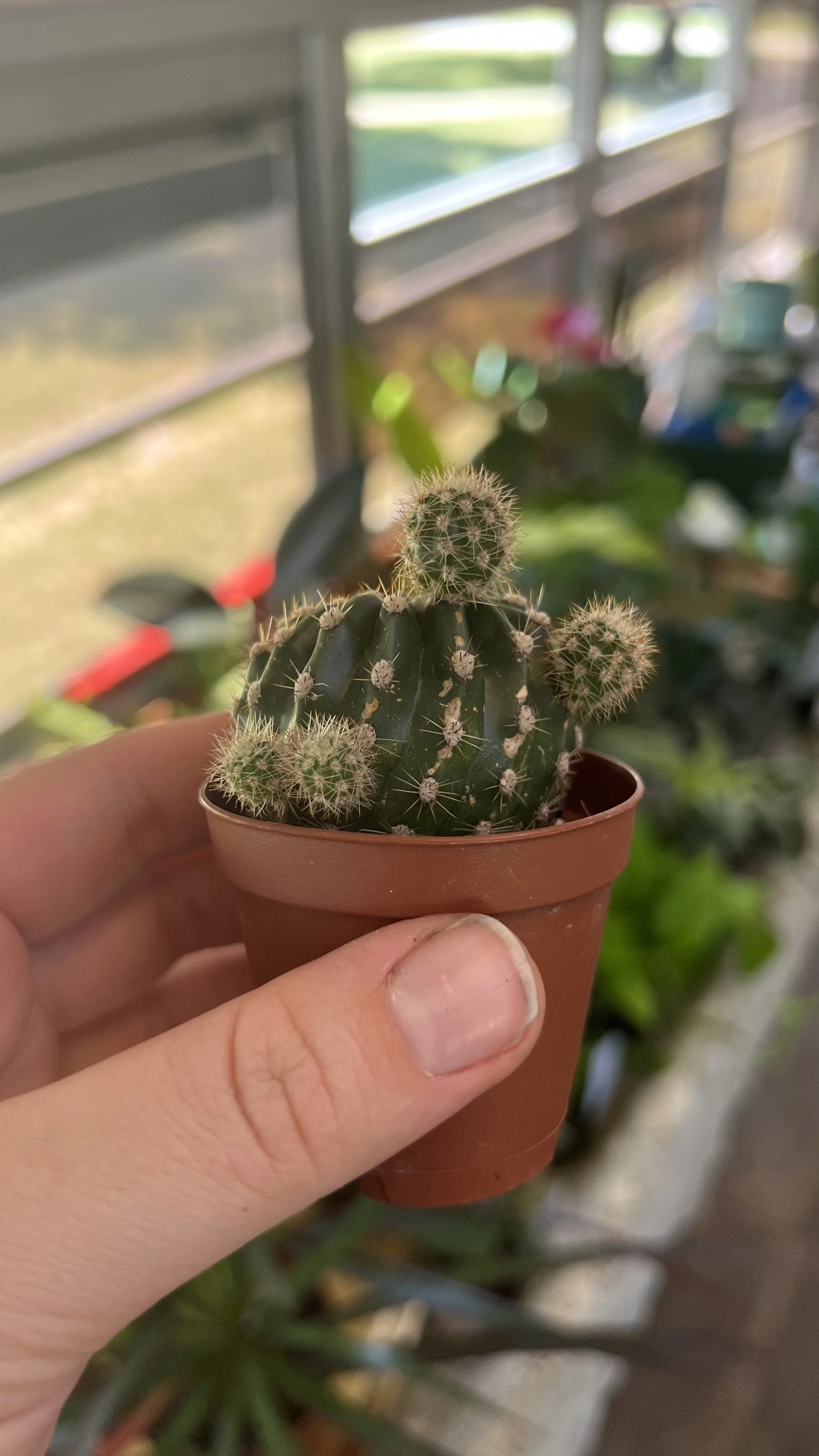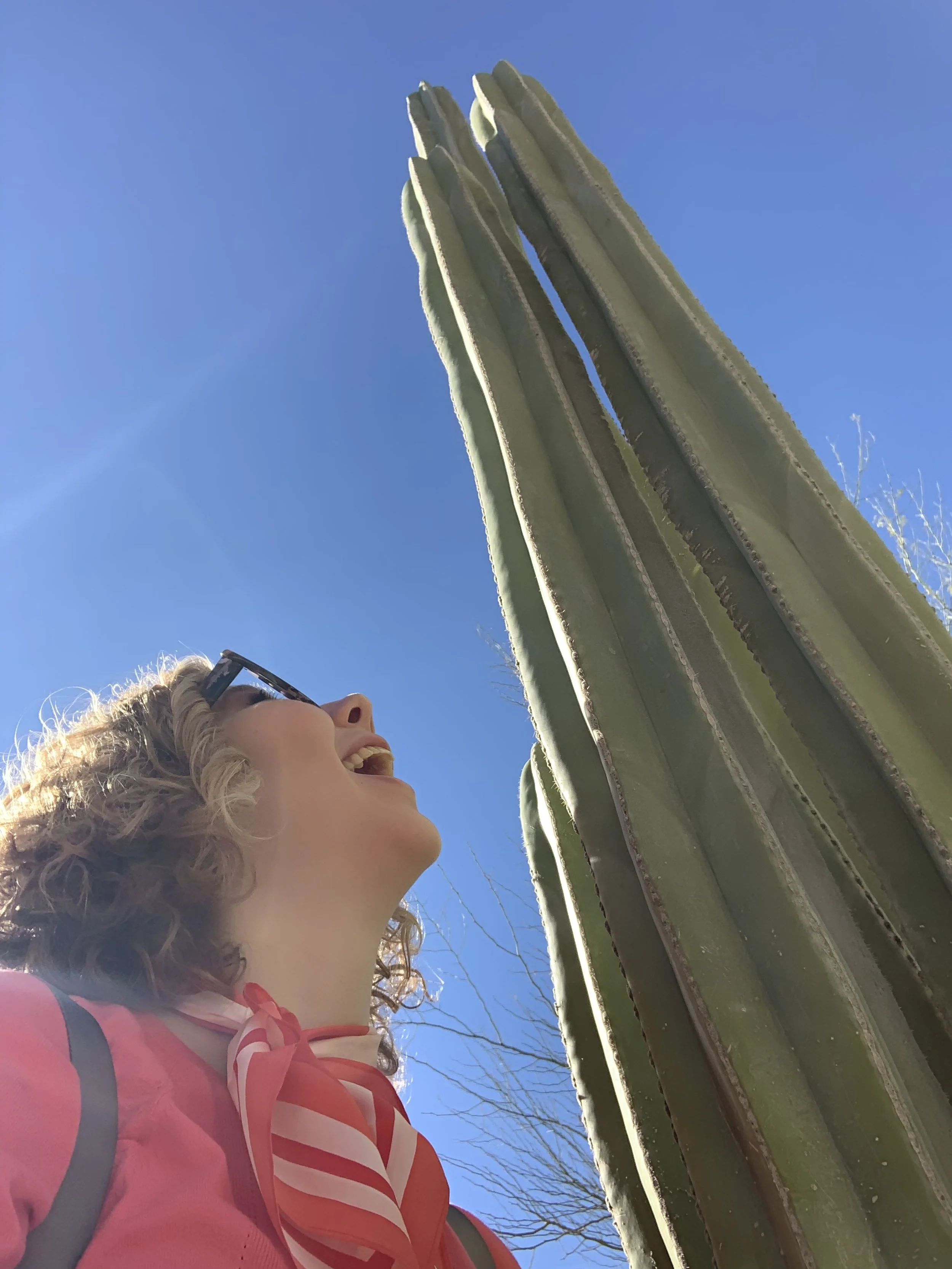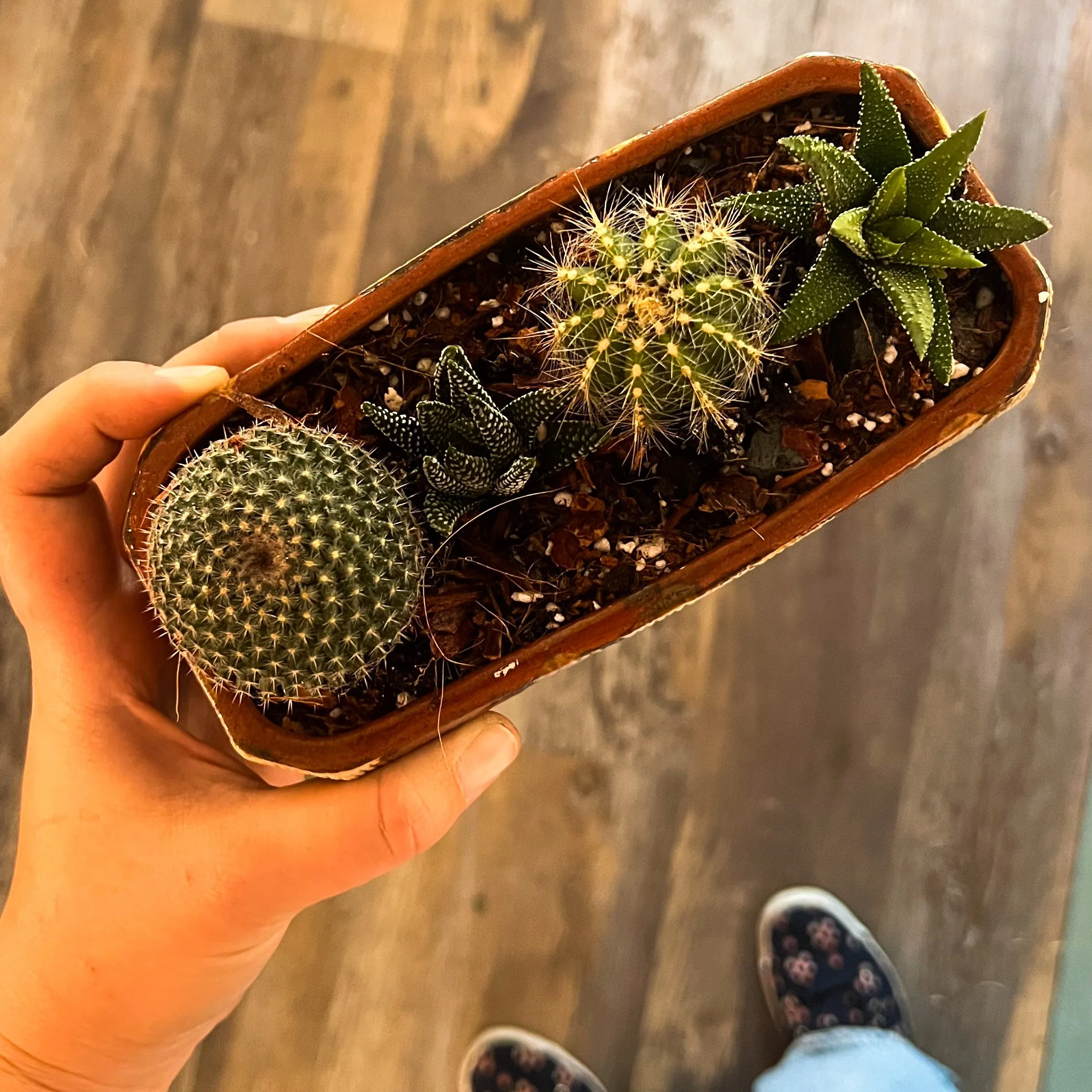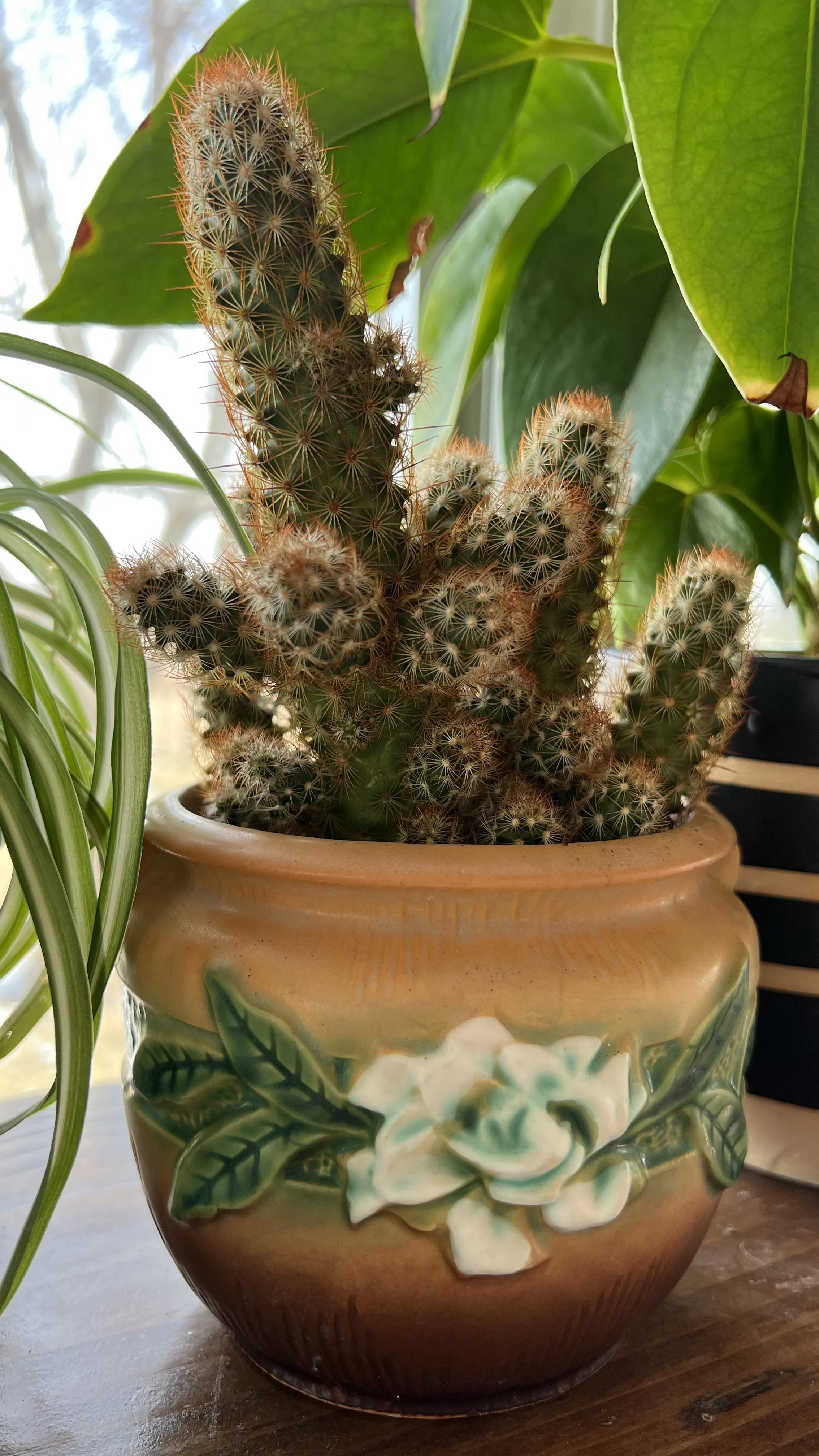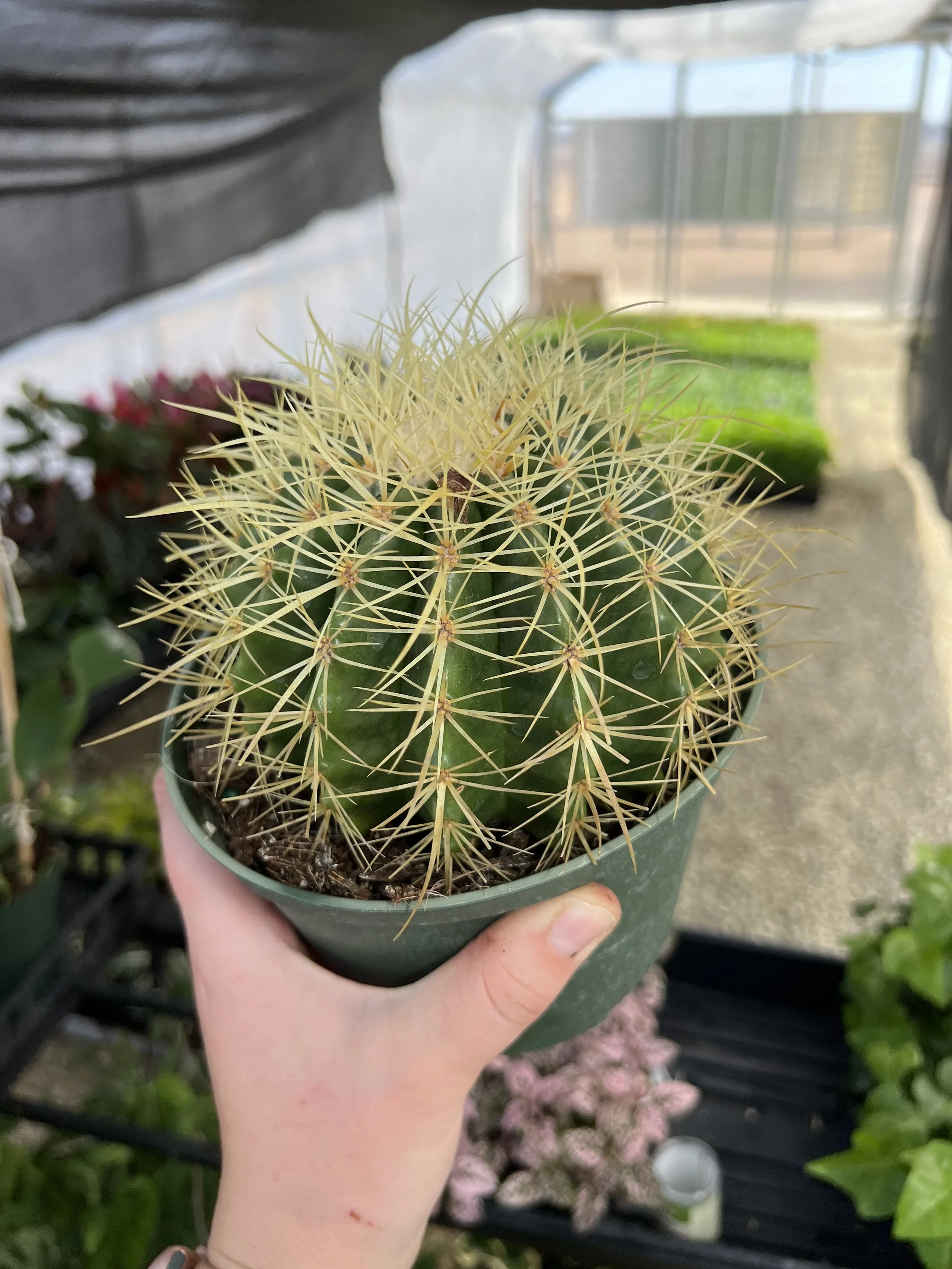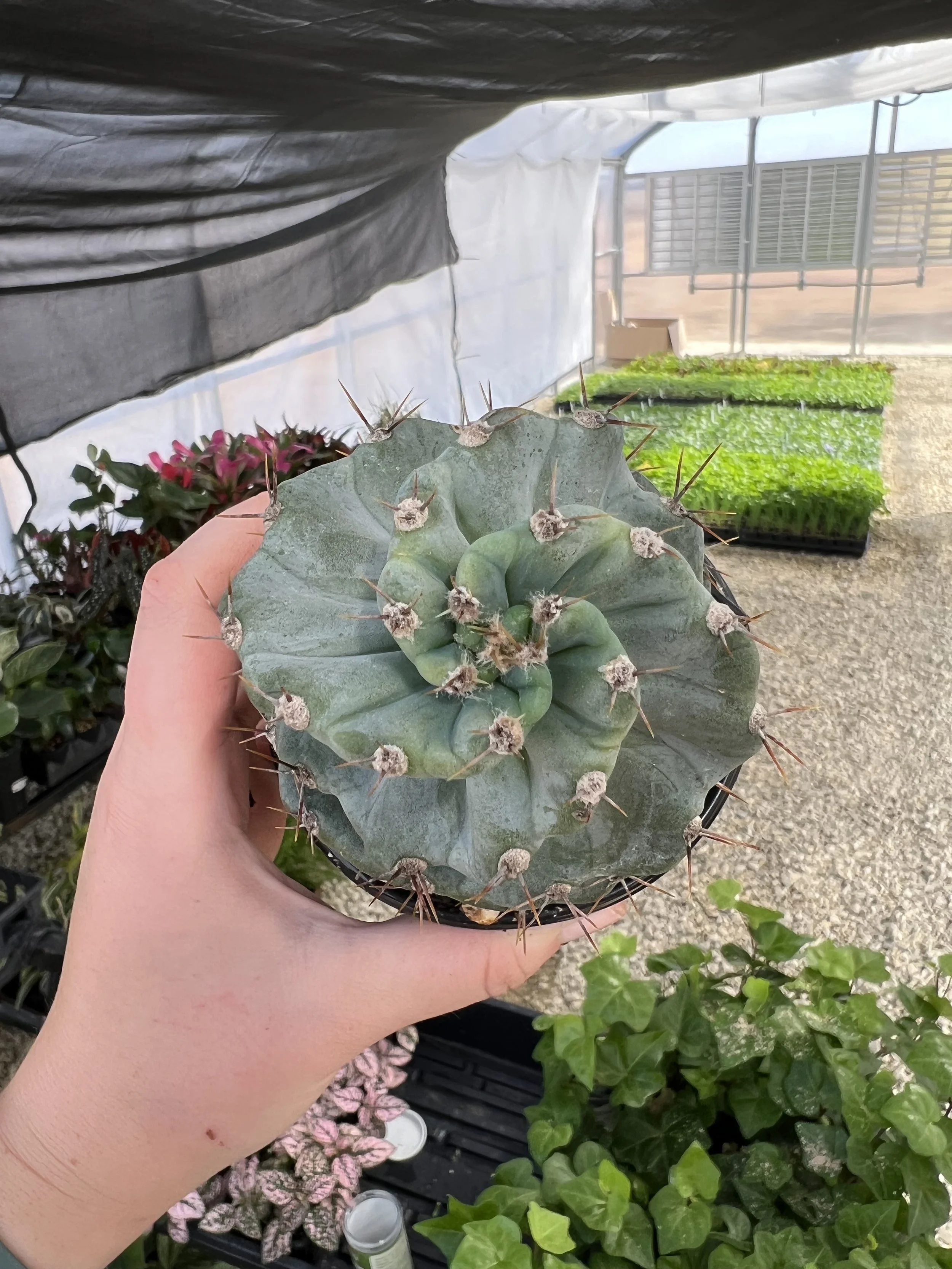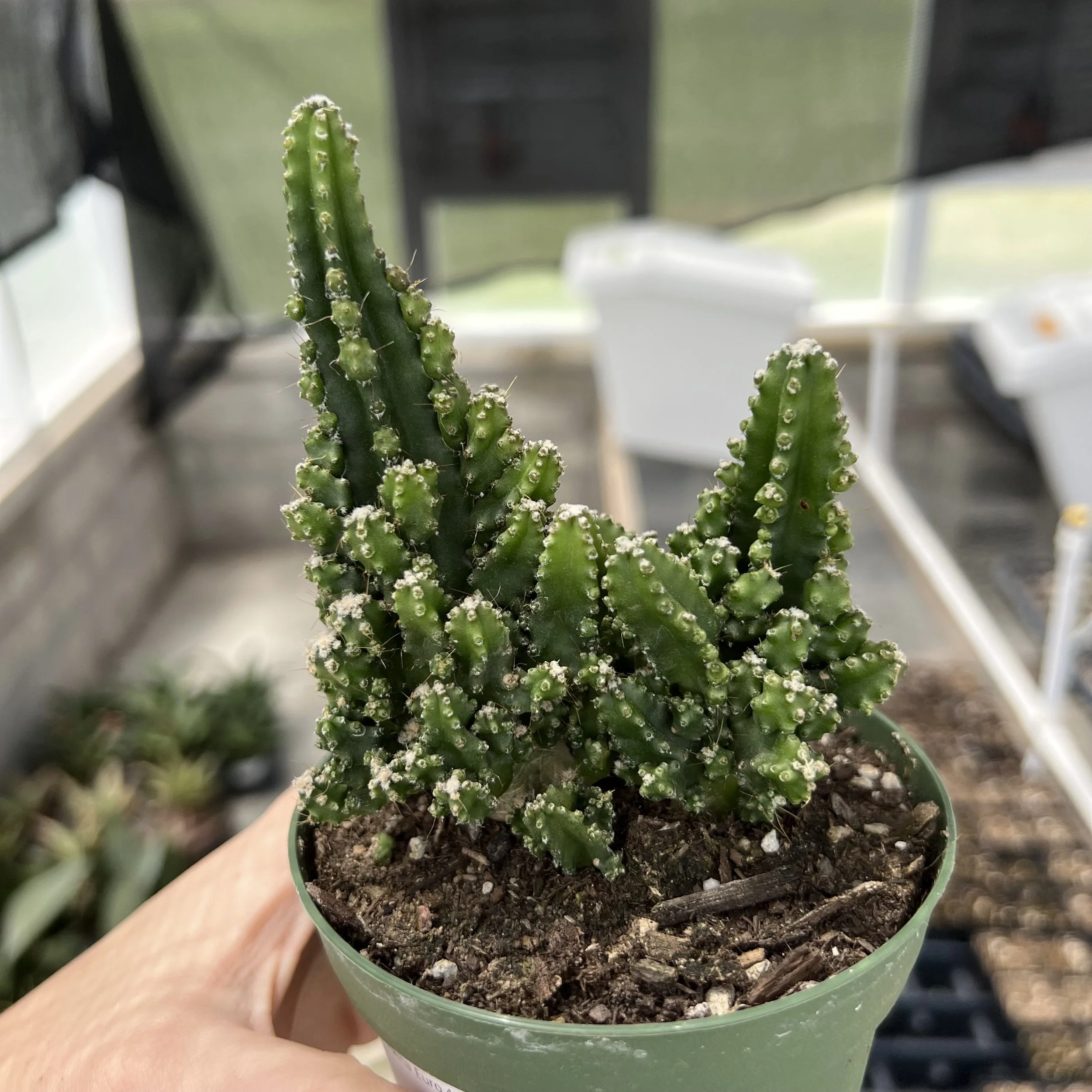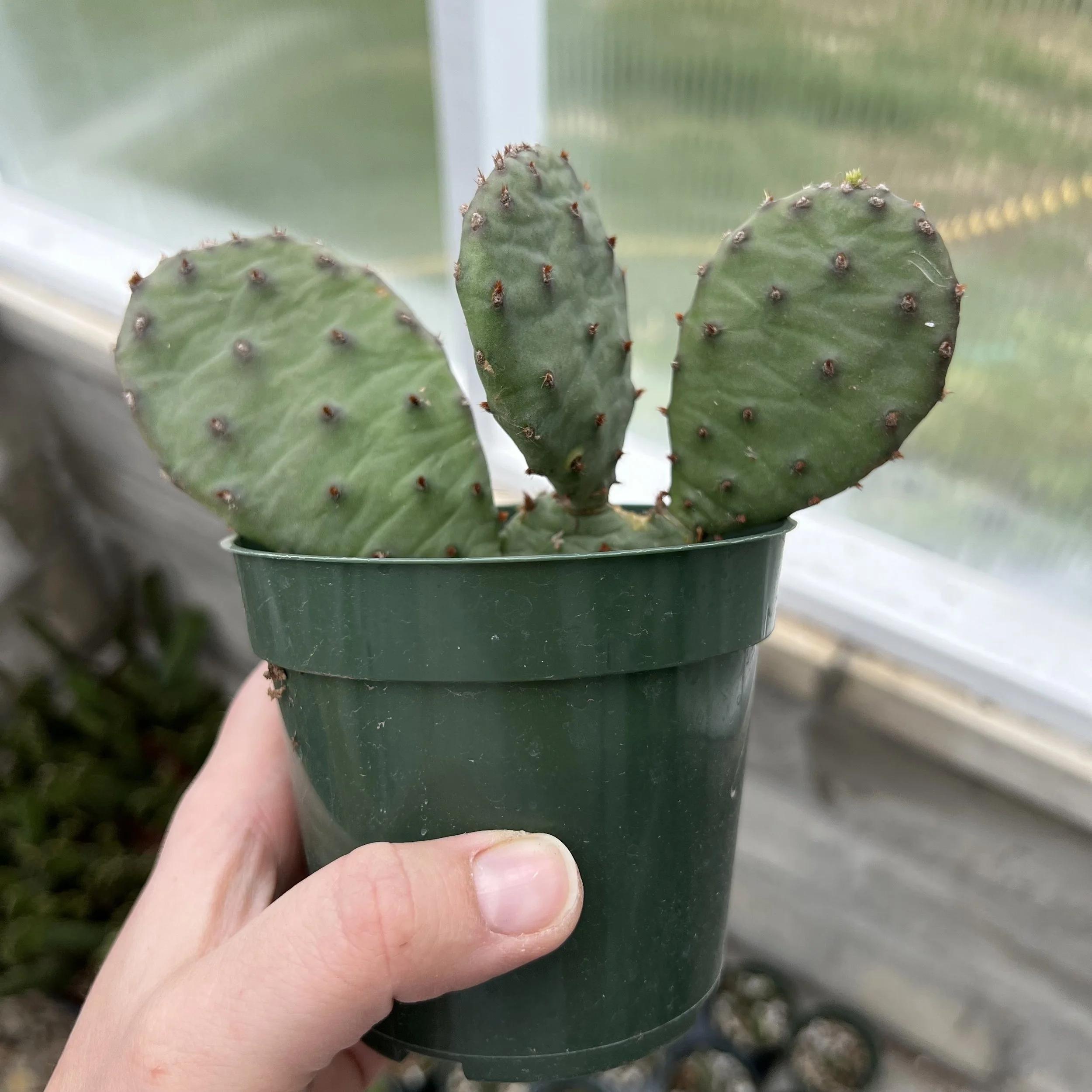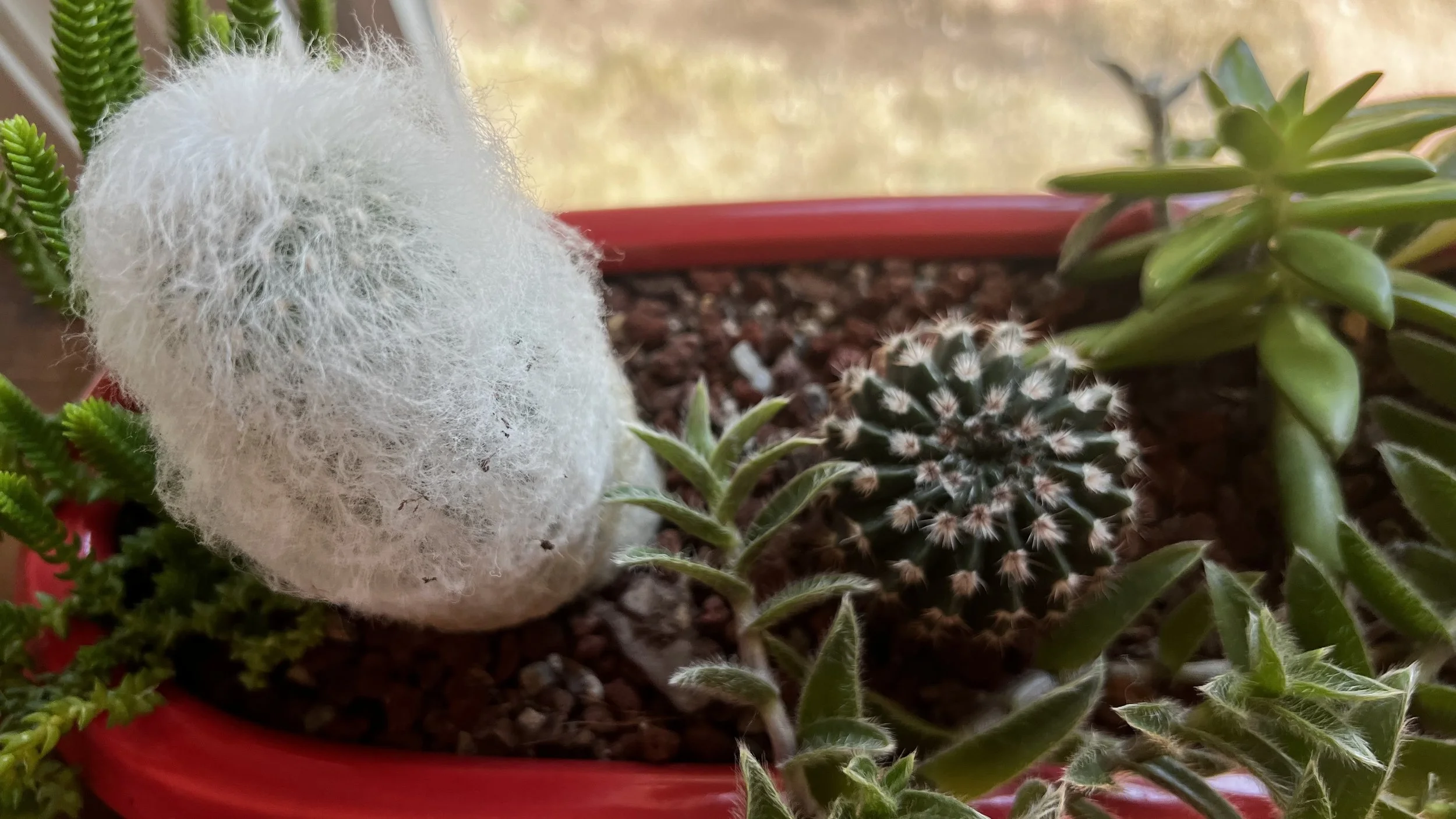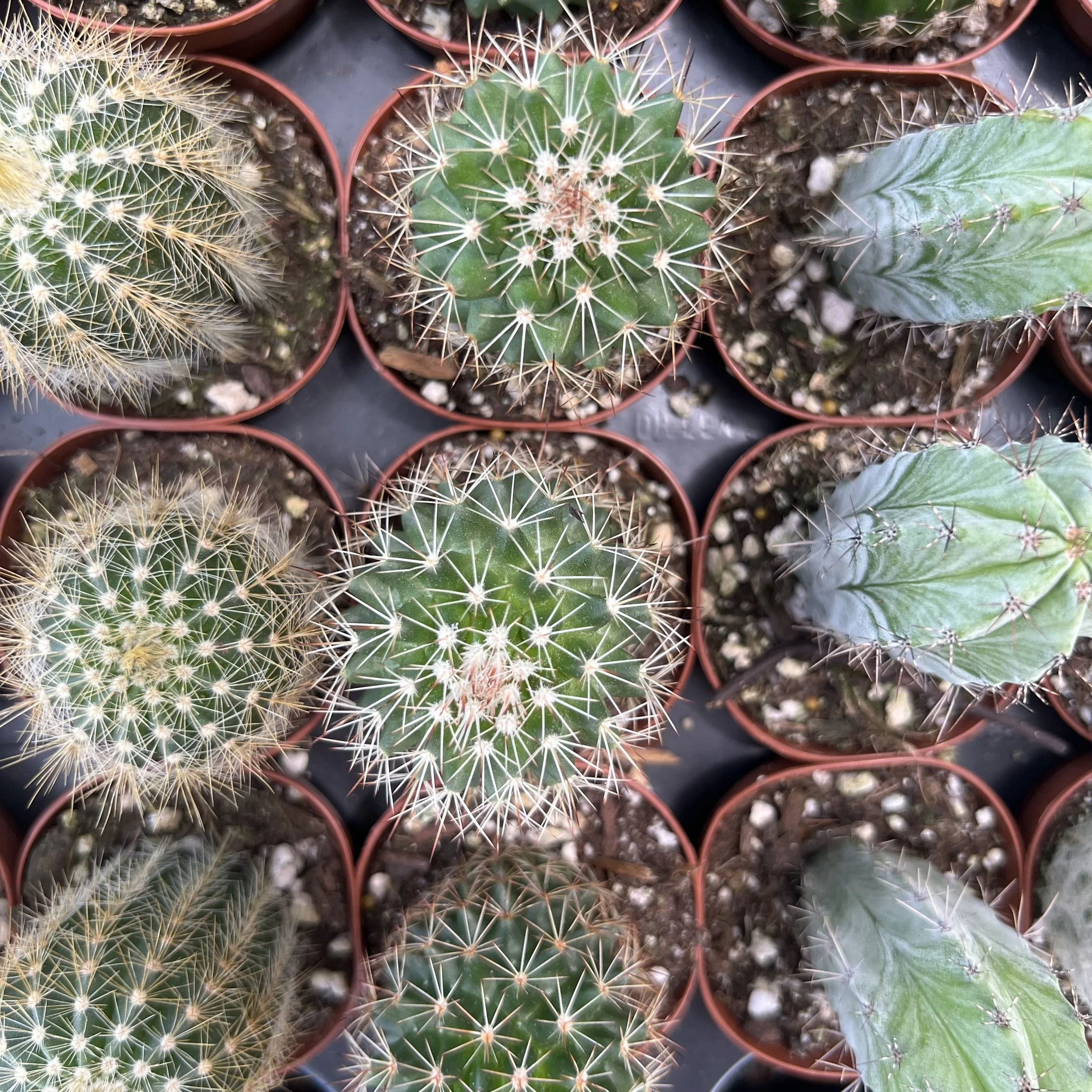CACTI
Family Cactaceae
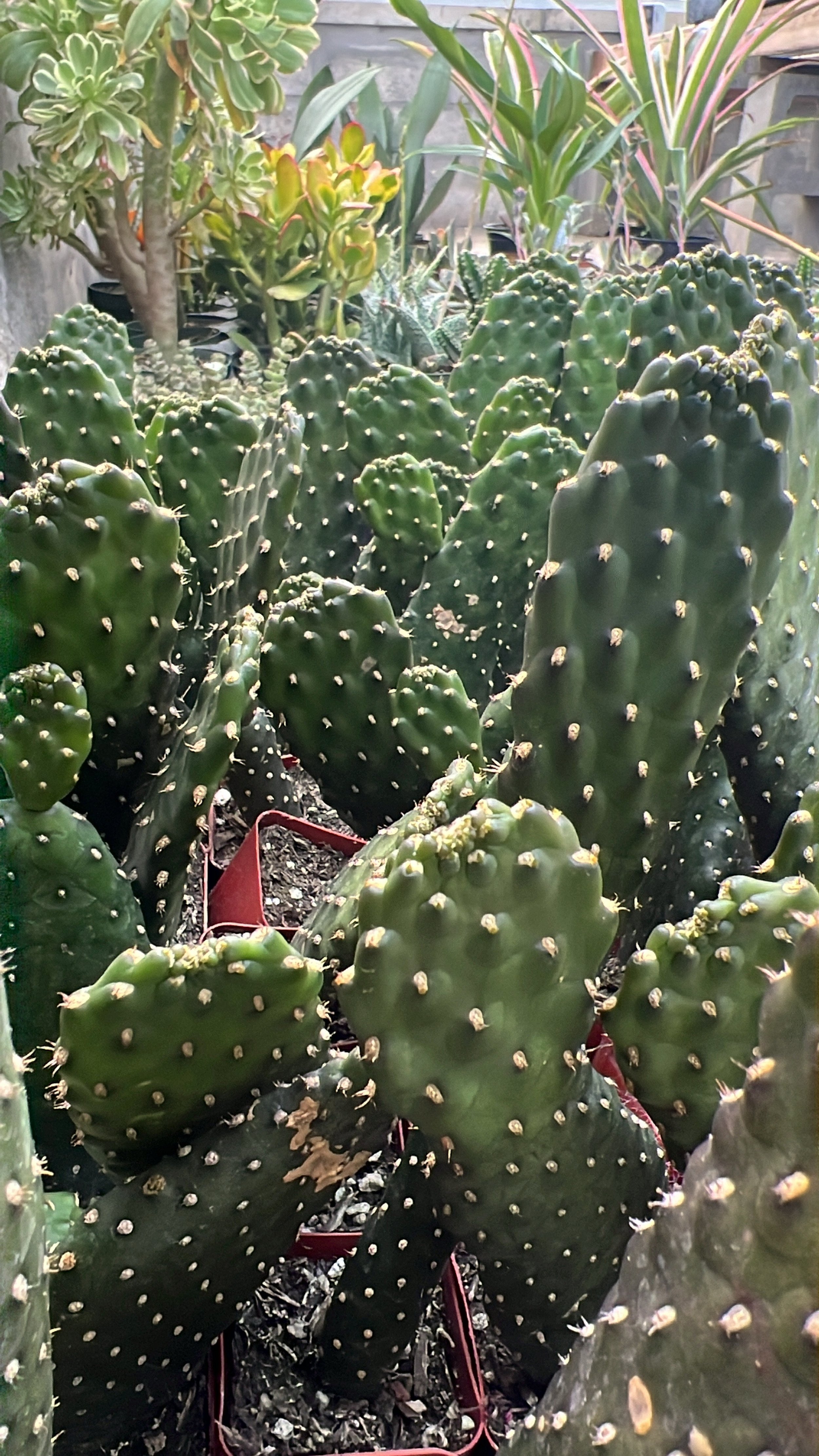
CACTI
Opuntia | Cereus | Echinocactus | Etc.
Family Cactaceae
-
Light: Full sun for 6+ hours a day is required for a cactus to truly thrive and show growth. However, most cacti can survive in lower light levels for over a year before declining health is apparent.
Temperature: 40-100 F (depending on species); for most cacti, cool temperatures are required to trigger flowering
Humidity: low
-
Water: Water sparingly every 2-4 weeks depending on your growing environment (humidity, light, temperature).
Repotting: Repot every 3-5 years or when the cactus girth expands to the pot edge. Use a well-drained potting mix designed for cactus growth.
Fertilizing: Incorporate fertilizer into your watering cycle once in spring and again in mid summer. Dilute an all purpose fertilizer (20-20-20) by one quarter.
-
The Cactaceae family has a wide variety of plants, boasting near 2000 species. In Kansas, our most widespread native cactus is Opuntia macrorhiza (prickly pear).
-
(Listed in order of commonality…)
Melting from low light stress
Stretch/legginess from low light levels
-
Question: My cactus is squishy and turning wrinkly. What’s wrong?
Answer: There is no straight forward answer, unfortunately. A squishy cactus can mean a few things.
Your cactus is suffering from low light stress. If you have had your cactus in an indoor, low light setting for 6 months to a year, it may be showing you that it has had enough.
Your cactus is too dry. Believe it or not, cacti can suffer from lack of moisture. Try watering your cactus at least once a month during the summer and once every other month in the winter.
A Note on Morphology
Plants in the Cactaceae family are succulent, which means they store water in modified plant parts (stems & leaves) for droughty seasons. Their modified leaves and stems make for unique forms, colors and textures that fascinate even the most indifferent gardeners.
Have a more specific question?
I’m just a few clicks away.

